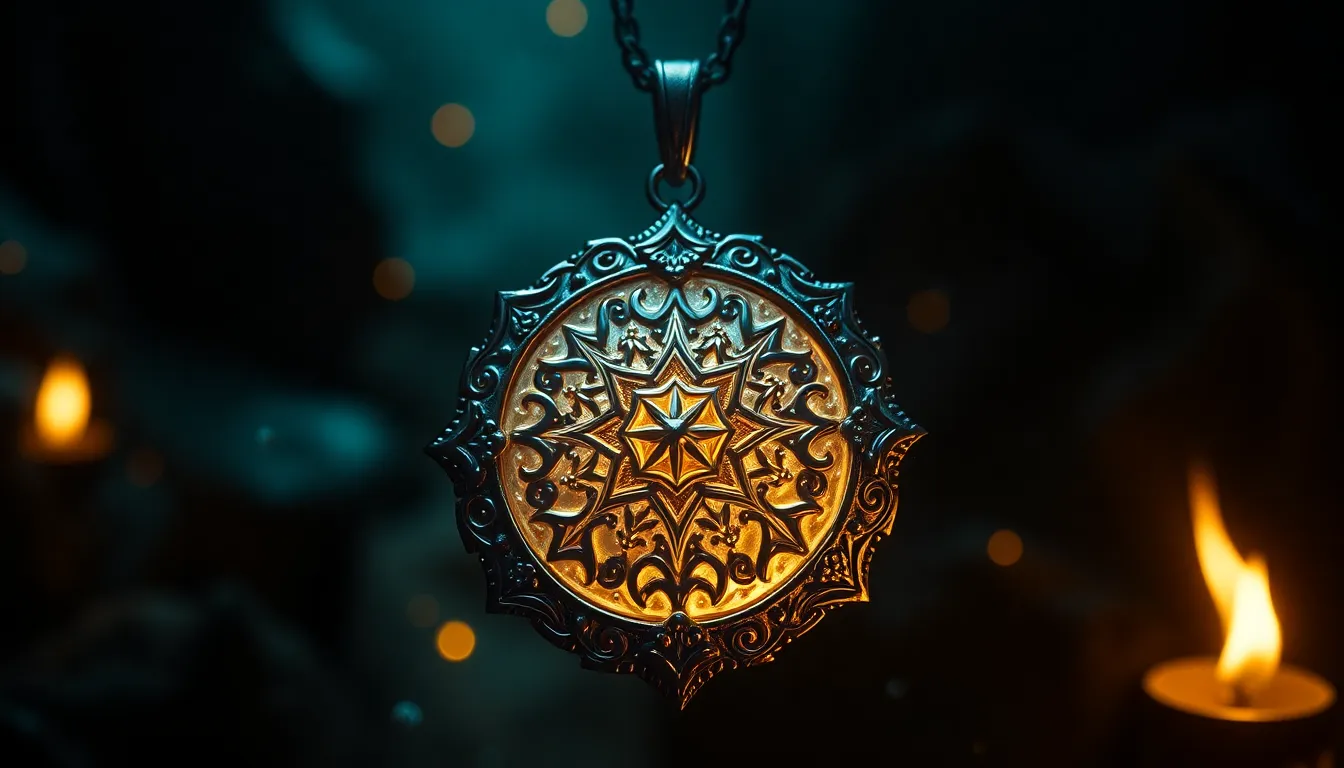The Enchanted Pendant: Myths of Protection and Love
I. Introduction
The concept of enchanted pendants has captivated the human imagination for centuries. These mystical pieces of jewelry are often believed to hold protective powers or the ability to attract love. From ancient times to modern interpretations, the myths surrounding these pendants have evolved but persist in various cultures.
Exploring these myths not only reveals historical and cultural significance but also helps us understand the human desire for connection and safety. The purpose of this article is to delve into the origins, symbolism, cultural variations, and modern-day relevance of enchanted pendants, uncovering the rich tapestry of beliefs that surround them.
II. Historical Origins of Enchanted Pendants
Enchanted pendants can trace their origins back to ancient civilizations that utilized protective amulets. These early forms of jewelry served not just as adornment but also as a safeguard against evil spirits, illness, and misfortune.
Throughout history, different cultures have attributed unique significance to pendants:
- Ancient Egypt: The Egyptians used various symbols, such as the ankh and scarab, to represent life and protection.
- Greco-Roman Traditions: Pendants often depicted deities or mythical creatures, believed to bestow favor or protection upon the wearer.
- Celtic Culture: Knotwork designs and symbols like the triskelion represented eternity and protection.
Over the ages, the enchanted pendant has evolved from simple amulets into intricate pieces of art, reflecting the cultural and spiritual beliefs of their time.
III. Symbolism of Protection in Enchanted Pendants
Many enchanted pendants incorporate symbols recognized for their protective qualities. Some common symbols and their meanings include:
- Hamsa: A hand-shaped symbol believed to protect against the evil eye.
- Eye of Horus: An ancient Egyptian symbol representing protection, royal power, and good health.
- Cross: Often worn for spiritual protection in various religions.
Additionally, the materials used in crafting enchanted pendants play a crucial role in enhancing their protective qualities. Gemstones like amethyst, obsidian, and turquoise are thought to carry unique energies that can shield the wearer from harm.
Many individuals recount personal stories of how enchanted pendants have offered them a sense of security or protection during challenging times, further solidifying the belief in their power.
IV. The Myth of Love and Enchanted Pendants
Beyond protection, enchanted pendants are often associated with love. Many cultures believe that certain pendants can attract love, enhance relationships, or even mend broken hearts.
Legendary tales abound, such as:
- The story of a magical locket that reunited two star-crossed lovers.
- A pendant crafted from a rose quartz, believed to attract love and promote harmony in relationships.
The psychological impact of wearing love-themed jewelry cannot be underestimated. Many people report feeling more confident and open to love when adorned with such pendants, suggesting that belief in their power can influence emotional states and interactions.
V. Cultural Variations: Global Perspectives on Enchanted Pendants
Enchanted pendants can be found in various cultures around the globe, each with unique myths and beliefs. For example:
- Celtic Tradition: Pendants often feature intricate knotwork symbolizing eternity and interconnectedness.
- Egyptian Culture: Amulets adorned with hieroglyphics were believed to protect the wearer in the afterlife.
- Asian Cultures: In many traditions, jade pendants are revered for their ability to bring luck and love.
In today’s globalized world, these cultural interpretations of enchanted pendants have blended, creating contemporary designs that reflect a fusion of traditions and beliefs.
VI. The Science Behind Belief: Psychology of Enchanted Pendants
The belief in the protective or love-attracting properties of enchanted pendants can be understood through psychological concepts. One key aspect is the placebo effect, where belief in an object’s power can lead to real emotional or psychological benefits.
People often form emotional connections to their jewelry, imbuing it with personal significance. Rituals, such as cleansing the pendant or setting intentions, can enhance this belief, making the pendant feel more potent and meaningful.
VII. Crafting Your Own Enchanted Pendant
Creating a personal enchanted pendant can be a deeply meaningful experience. Here are some steps to consider:
- Materials: Choose stones or materials that resonate with you, such as amethyst for protection or rose quartz for love.
- Symbols: Incorporate symbols that hold personal significance or reflect your intentions.
- Infusion Ritual: Set aside time for a ritual to imbue your pendant with love and protection, perhaps through visualization or affirmations.
Many individuals have shared their stories of crafting their own enchanted pendants, emphasizing the personal empowerment and connection they felt throughout the process.
VIII. Modern-Day Relevance of Enchanted Pendants
In contemporary society, enchanted pendants continue to hold relevance. Trends in fashion jewelry often draw inspiration from ancient beliefs, blending style with spiritual significance.
There has been a resurgence of interest in spirituality and personal empowerment, leading many to seek out enchanted pendants as tools for self-expression and protection.
How these pendants are marketed today reflects this growing trend, appealing to consumers’ desires for both aesthetic beauty and deeper meaning.
IX. Critiques and Skepticism: Debunking Myths
Despite the allure of enchanted pendants, skepticism exists regarding their efficacy. Critics argue that:
- There is no scientific evidence to support the claims of protective or love-attracting properties.
- The belief in these pendants often straddles the line between genuine faith and superstition.
Ultimately, whether enchanted pendants are viewed as tools of empowerment or mere decorative items depends on individual beliefs and experiences. The line between belief and skepticism is often subjective, shaped by personal narratives and cultural backgrounds.



